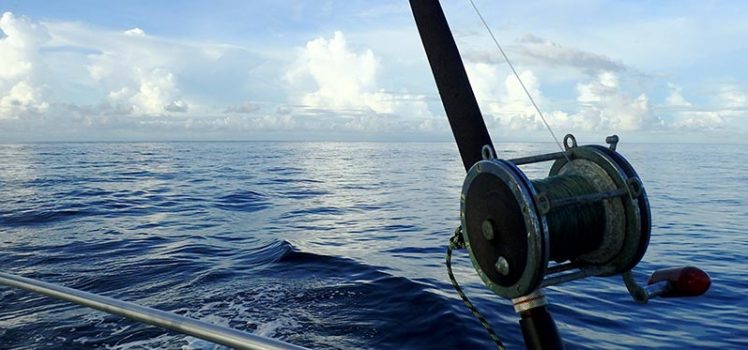New Reels Catch Fish So Purchase Some

In one of our recent blog posts someone asked a question (or made a comment) about a sailboat having the “right of way” over a mega yacht. While this may be true in the open water if the sailboat was actually under sail and not running their engines, in the particular situation where it occurred, in the narrow channel leading towards the bridge in St. Maarten, where the sailboat was under power, I don’t believe it would have been the case.
The Collision Regulations spell out in detail the pecking order for, in the event of a potential collision, which vessel should maintain course and speed and which one must give way, taking action to move clear. We learned this little mnemonic to help us remember the order:
New Reels Catch Fish So Purchase Some.
- New: Not under command – A vessel which is aground, with a jammed rudder or a power boat with a loss of engines would be considered not under command.
- Reels: Restricted in maneuverability – A tug towing a barge can not turn or stop easily.
- Catch: Constrained by draft – A cruise ship in a narrow channel does not have much room to move off its course.
- Fish: Fishing (commercial) – This includes commercial fishing vessels that actually have lines or nets deployed. If they are not actually fishing, they are considered to be a power boat.
- So: Sailing – A sailboat under power of the wind only. If they are running their auxiliary engines, they are also considered to be a power boat.
- Purchase: Power – Any vessel not included in the above categories under way by means of an engine.
- Some: Seaplane – Duh!
Sounds great, right? And it’s important to know. All of the vessels above will show lights and/or day marks to indicate which category they fit into so that there is no question. On the other hand, there is also the saying that “might makes right,” aka “the law of gross tonnage,” meaning that when faced with a vessel a lot bigger than you, you should just get out of the way and not ask questions. This includes taking early and obvious action to avoid large ships at sea, even if you are under sail.

Even if we were under sail, I don’t think that I would want to get into a pissing match with this guy out at sea (this boat is docked about a half mile behind us right now).



“might makes right” is also known as the “law of gross tonnage”!
Spot on, Mike. I take exception to your description of Not Under Command: A vessel at anchor displays one black ball, a vessel aground displays three, only a vessel Not Under Command displays two.
Better examples would be: A vessel with a jammed rudder or a power boat with a loss of engines might be unable to manuver in accordance with the rules should they be required, so it would be prudent for them to display Not Under Command.
You are correct. I wrote that quickly this morning pre coffee. I will amend that. Thanks.
Great way to remember! We’re with you … not going to get into a match with a big boat!
Not a battle you can win.
In addition to the rules….
My rule of thumb, regarding when to get out of the way of big traffic, is to place myself in the helmsman’s shoes; at what point would all of this damn small boat traffic either make me nervous or have the potential to cause a conflict. For example, sailors passing in front always need to think about the wind dying ( a freighter grounding near Baltimore was cause by this a few years ago–they had a sail handling problem and then broke the key off in the ignition).
I know if I was up there I would appreciate a LOT of room. It wouldn’t be greed, just fear.
Broke the key off? They must have been a tad excited at that point. No doubt they were way too close then. Your rule of thumb sounds good.
I couldn’t find the full story, but this is a summary:
http://articles.baltimoresun.com/2001-08-18/news/0108180200_1_todd-davis-kathleen-davis-davises
The pilot got many compliments, but it could have ended differently. There are some rocks and the ship might not have missed them in poor weather or a strong current.
Years ago I crossed too closely in front of freighters many times, I’m sure. Age teaches caution and respect for others. I still go climbing, but I’m at least more careful to identify the hazards before I fluant them.
Interesting. Seems it all ended up without much damage but obviously could have been a lot worse. I bet they stay a bit farther from the big guys next now.